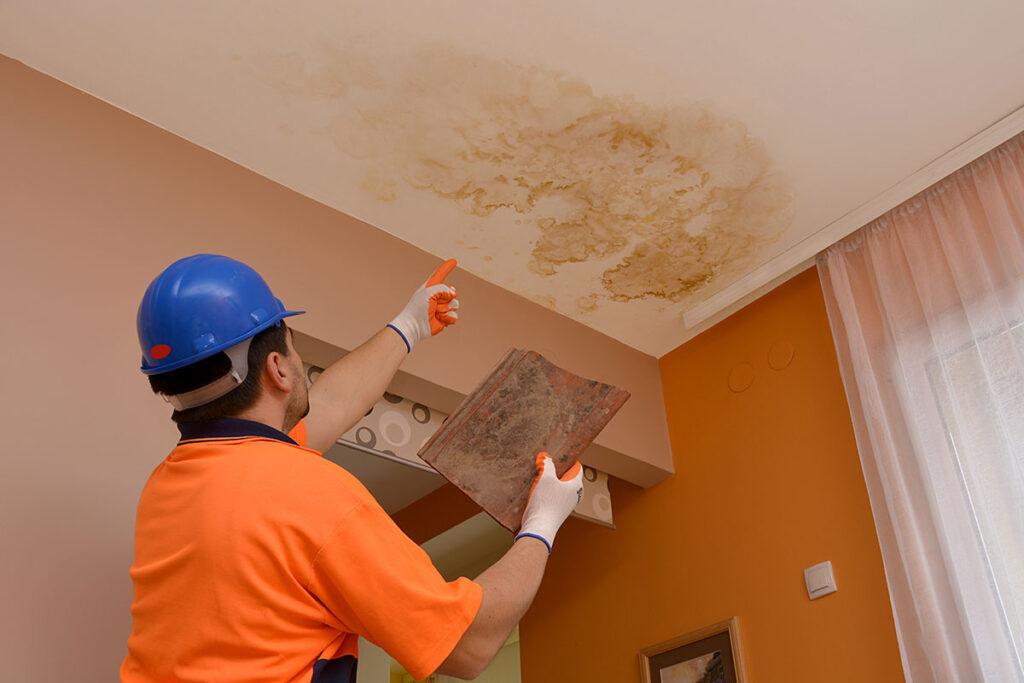Welcome to RJT Construction, your trusted roofing experts in Houston. Identifying roof leaks early is crucial to preventing serious damage to your home. The local Houston climate, with its heavy rains and occasional storms, can exacerbate roof issues, making timely detection and repair even more critical. In this article, we’ll explore the various interior signs of a roof leak, how to spot them, and what steps to take to address these issues. Understanding these signs can help you maintain a healthy roof and avoid costly repairs.
Understanding Roof Leaks
Roof leaks can occur for various reasons, including damaged shingles, missing flashing, and clogged gutters. These leaks often lead to significant issues within your home, such as water damage, mold growth, and structural deterioration. The exterior walls and the entire roof’s framing are especially vulnerable. Timely identification of a leaking roof is vital.
Catching these issues early can prevent moisture buildup, which can lead to extensive and expensive repairs. Regular inspections and maintenance by a professional roofing contractor can help you stay ahead of potential problems, ensuring your roof remains in good condition.
Key Interior Signs of a Roof Leak
Recognizing the interior signs of a roof leak is crucial for early detection and prevention of extensive damage. Common indicators of a leaky roof include water stains, mold growth, dripping water, and damaged ceilings and walls.
These signs often appear long before the exterior damage becomes visible, making it essential to be vigilant and proactive. By identifying these signs early, you can avoid costly repairs and maintain the integrity of your home.
Water Stains on Ceilings and Walls
Water stains are one of the most obvious signs of a roof leak. They typically appear as brown or yellowish discolorations on ceilings and walls. These stains may be circular or irregular in shape and often expand over time if the leak persists.
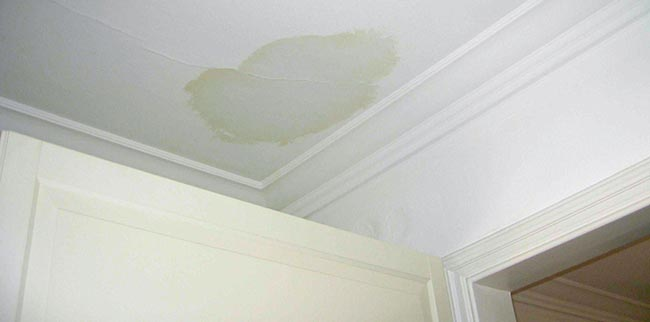
Differentiating water stains from other types of stains is relatively straightforward: water stains often have a slightly textured appearance and may feel damp to the touch. They can also be accompanied by peeling paint or wallpaper. If you notice such stains, it’s a clear indication that water is seeping through your roof and into your home’s interior.
Mold Growth and Musty Smells
Roof leaks can create a moist environment conducive to mold growth. Mold often appears as black, green, or white patches on walls, ceilings, and other surfaces. It thrives in areas with consistent moisture, such as those affected by roof leaks.
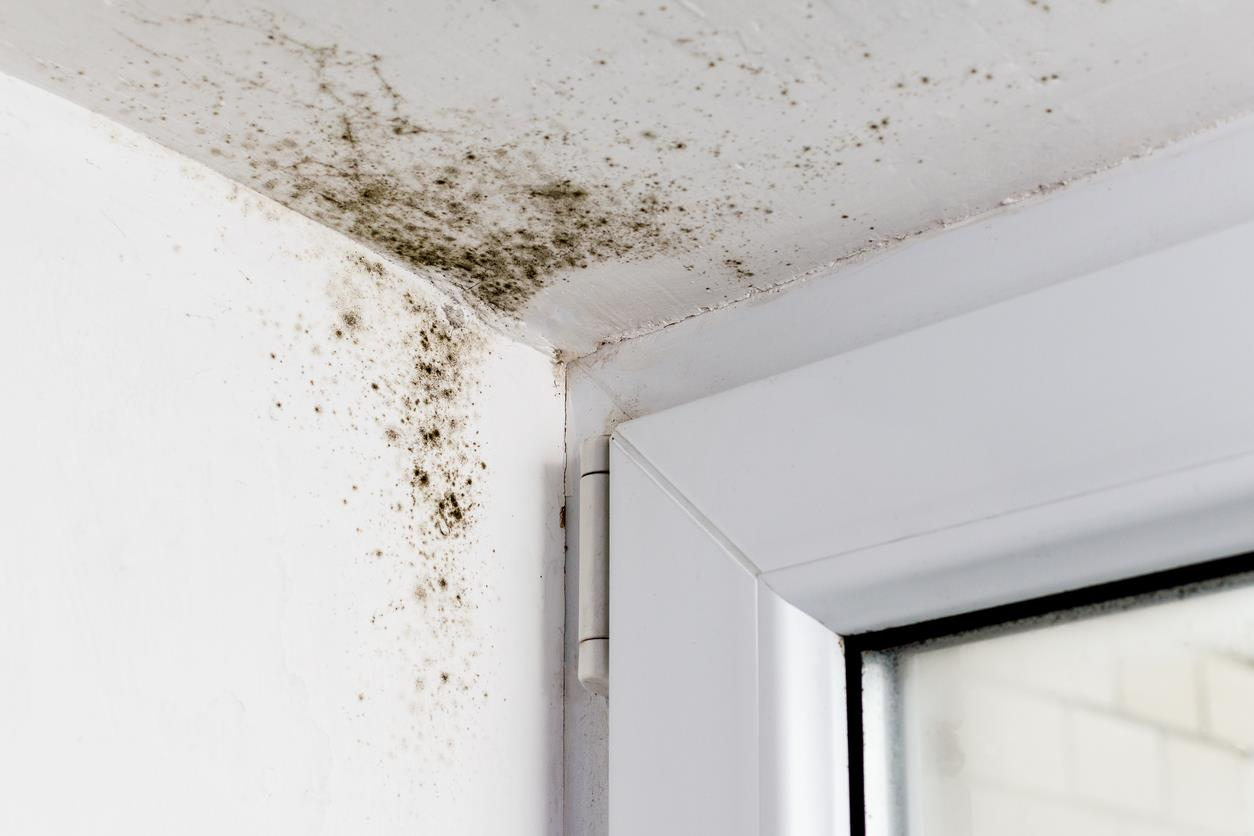
In addition to visible mold, you might also notice musty odors, which are a telltale sign of mold presence. Mold growth poses serious health risks, including respiratory issues, allergic reactions, and other health problems, especially for individuals with preexisting conditions. Addressing roof leaks promptly can help prevent mold proliferation and maintain a healthy indoor environment.
Dripping Water and Moisture Buildup
Dripping water is a clear and urgent sign of a roof leak. You might notice water dripping during or after heavy rain, particularly in areas directly below the roof. In addition to visible dripping, moisture buildup can manifest as damp spots or condensation on walls, ceilings, and even around light fixtures.
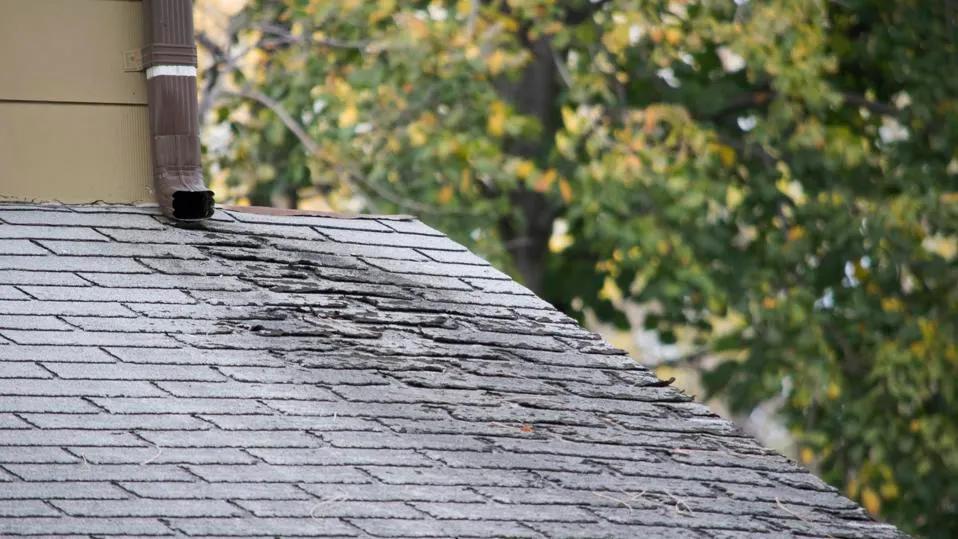
These signs indicate that water is infiltrating your home, and if left unchecked, can lead to more severe issues like wood rot and structural damage. It’s crucial to address dripping water immediately to prevent further damage and mitigate repair costs.
Damaged Ceilings and Walls
Roof leaks can cause significant damage to ceilings and walls over time. You may observe sagging ceilings, blistering or peeling paint, and cracks in the plaster or drywall. These damages not only affect the aesthetic appeal of your home but also compromise its structural integrity.
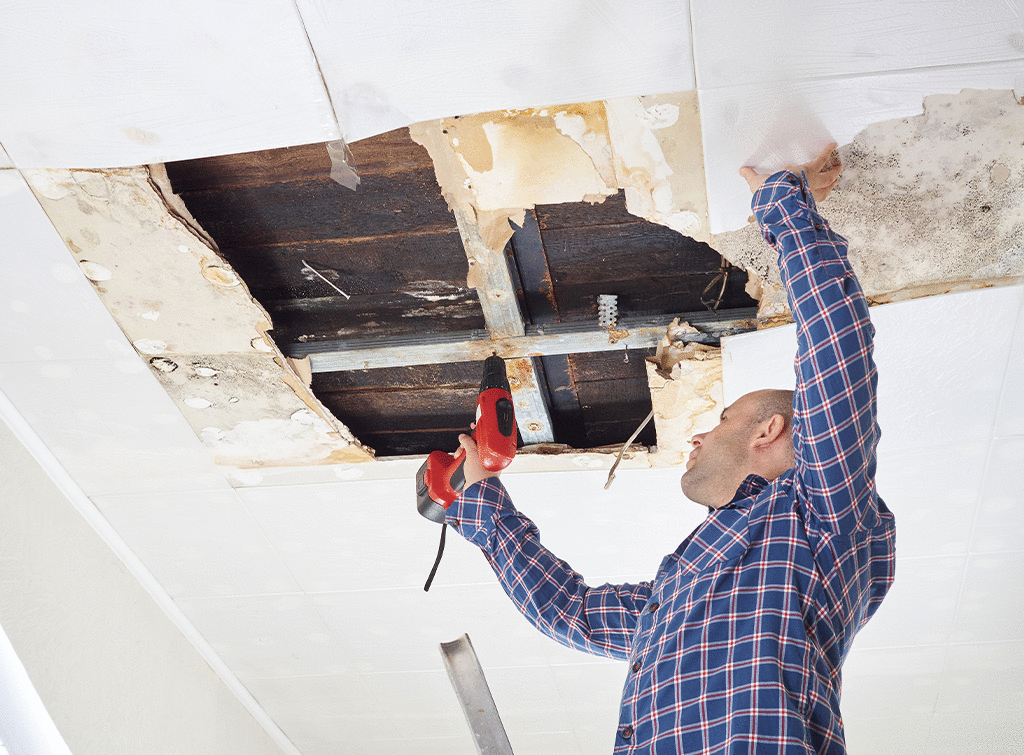
Prolonged exposure to moisture weakens the materials, leading to potential collapses and extensive repairs. Regularly inspecting your ceilings and walls for such signs can help you catch roof leaks early and take corrective measures before the damage becomes extensive.
Common Interior Signs of a Roof Leak and How to Address Them
Inspecting the attic is crucial for identifying early signs of a roof leak. The attic often reveals issues before they become apparent in the living spaces below. Regular inspections can help you detect problems like wet insulation and rotted framing, which can indicate a leaking roof. By addressing these signs promptly, you can prevent further damage and maintain the overall health of your roof structure.
Wet Insulation
Wet insulation is a clear sign of a roof leak. To check for wet insulation, examine the material for dampness or discoloration. Wet insulation may feel spongy and can often have a distinct, musty odor.
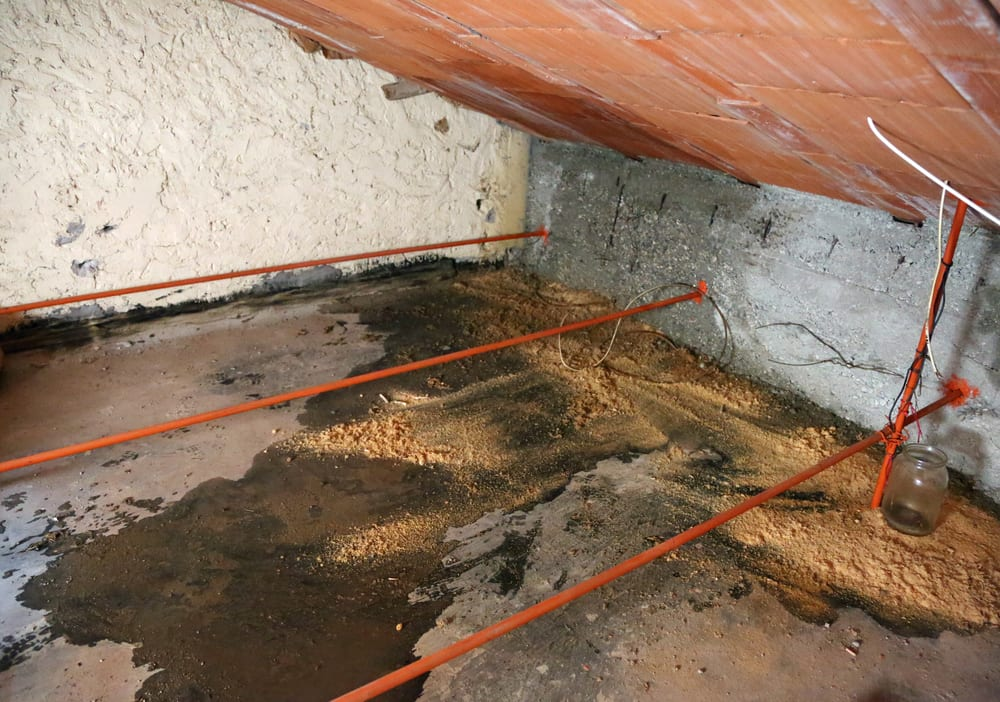
The implications of wet insulation are significant; it loses its effectiveness, leading to increased energy costs as your home becomes less efficient at maintaining temperature. Moreover, wet insulation can foster mold growth, posing health risks. If you find wet insulation, it’s essential to locate and repair the source of the leak immediately to prevent further issues.
Rotted Framing and Rusty Pipes
Rotted framing and rusty pipes in the attic are also indicative of prolonged moisture exposure from roof leaks. Signs of rotted wood include soft, crumbling areas and discoloration, often accompanied by a musty smell. Rusty pipes, on the other hand, may show flaking or reddish-brown stains.
These issues can compromise the structural integrity of your home, leading to more extensive damage if not addressed. Regularly checking the attic for these signs can help you catch and fix leaks early, preserving the strength and safety of your home’s framework.
Warning Signs in the Roof Structure
Indicators of roof leaks can often be found in the roof structure itself. Regularly inspecting your roof for damaged or missing shingles and issues with flashing and roof vents can help you identify and address leaks before they cause significant damage to your home’s interior.
Damaged or Missing Shingles
Damaged or missing shingles are a common cause of roof leaks. Visual signs include cracked, curled, or missing shingles, which can create gaps that allow water to seep into the roof’s structure. The impact on the roof’s integrity is significant; compromised shingles can lead to leaks that damage the underlying materials and eventually the interior of your home. Regularly inspecting your roof and replacing any damaged or missing shingles can help maintain the roof’s integrity and prevent leaks.
Damaged Flashing and Roof Vents
Flashing and roof vents are critical components designed to direct water away from vulnerable areas of the roof. Damaged flashing, which can be bent, corroded, or missing, fails to provide adequate protection, allowing water to penetrate the roof structure. Similarly, issues with roof vents, such as cracks or improper sealing, can lead to leaks.
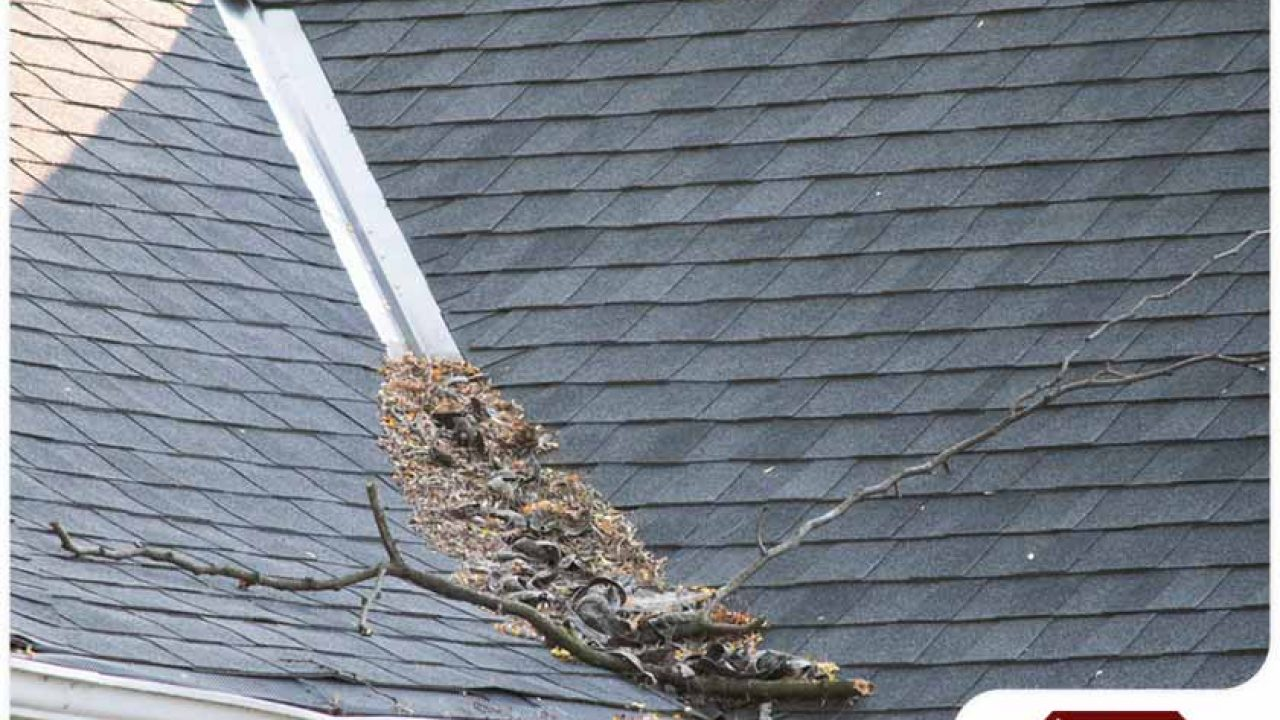
Inspecting these areas for damage and ensuring they are properly maintained is essential. Damaged flashing and roof vents can cause significant leaks if not addressed, leading to extensive and costly repairs.
Additional Indicators of Roof Leaks
Some signs of roof leaks may not be immediately obvious, but they can indicate significant underlying issues. Paying attention to less obvious indicators such as rusted gutters and water stains around light fixtures can help you catch leaks early and prevent extensive damage to your home.
Rusted Gutters and Downspouts
Rusted gutters and downspouts are often overlooked but can be a sign of roof leaks. Rust indicates prolonged exposure to moisture, which can result from leaks or poor drainage. To check for rust, inspect your gutters and downspouts for reddish-brown discoloration, flaking metal, or holes.
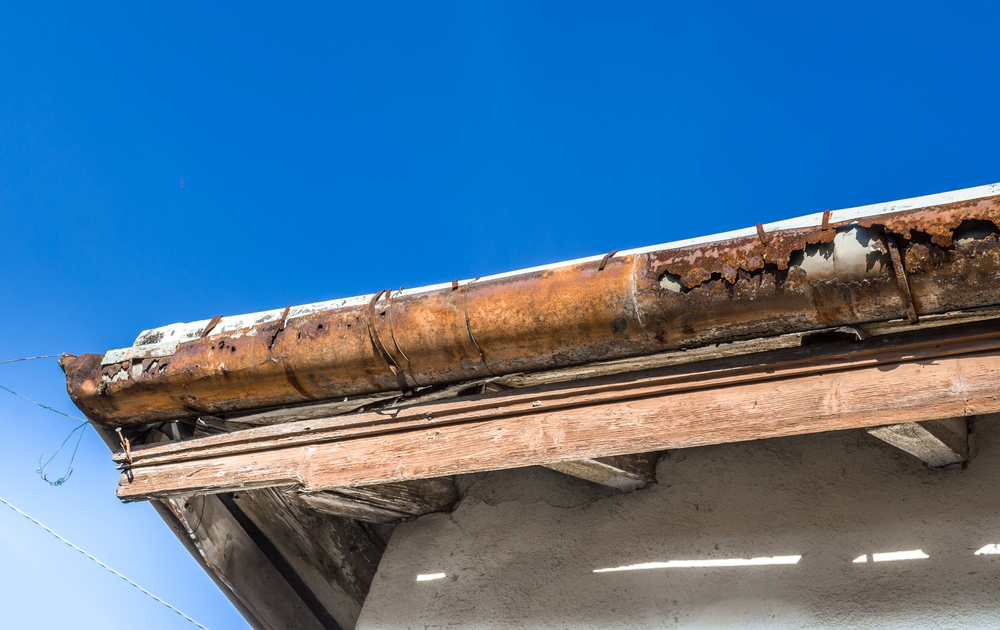
Rusty gutters can fail to channel water away from your home effectively, leading to water pooling around the foundation and potentially seeping into the roof structure. Regular maintenance and replacement of rusted components are crucial to prevent water damage and ensure your roof remains leak-free.
Water Stains Around Light Fixtures
Water stains around light fixtures are a serious indication of a roof leak. These stains often appear as discolored patches on the ceiling around the fixtures and can sometimes be accompanied by electrical issues such as flickering lights.
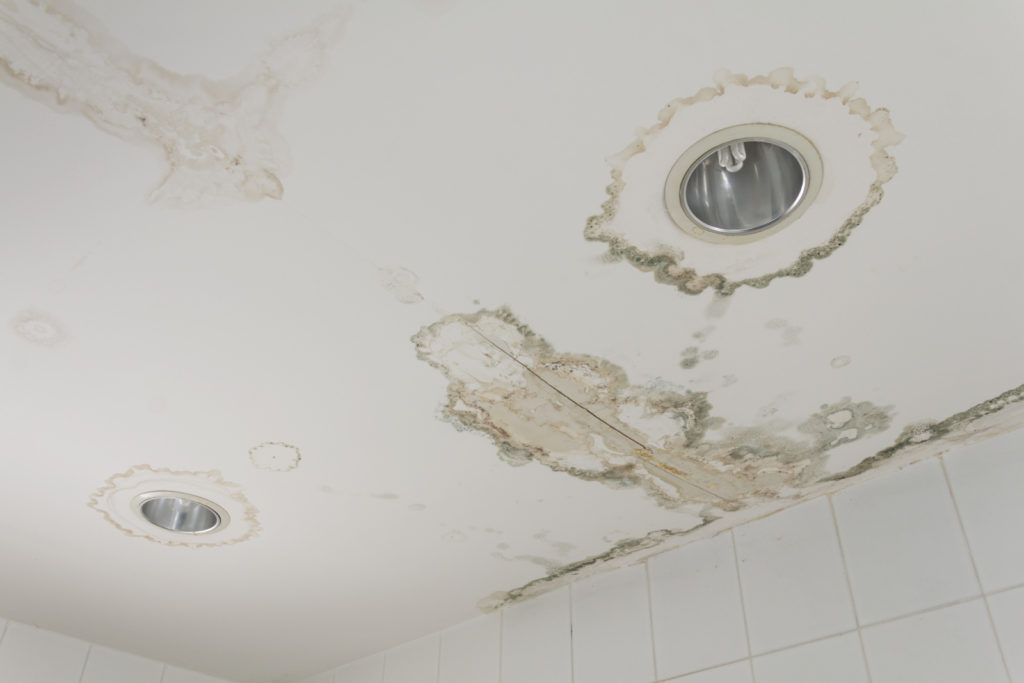
Identifying these stains is crucial, as they not only signify water intrusion but also pose a safety hazard due to the risk of electrical shorts or fires. If you notice water stains around light fixtures, it’s essential to address the source of the leak immediately and have a professional inspect the wiring to ensure safety.
Professional Roofer and the Roofing Industry
Hiring a professional roofer is crucial when dealing with roof leaks. The roofing industry has experts who can identify and repair possible leaks more effectively than DIY methods. They can also provide maintenance tips and ensure that any installations, such as solar panels, are correctly sealed to prevent future leaks.
Recognizing Small Leaks and Acting Quickly
Even small leaks can lead to significant damage if not addressed promptly. Common signs of small leaks include water flows or dripping water, particularly after heavy rains. Regularly inspecting your roof and acting quickly upon noticing any potential issues can save you from costly repairs. Using tools like a wire brush can help clear debris and identify leaks around curled shingles.
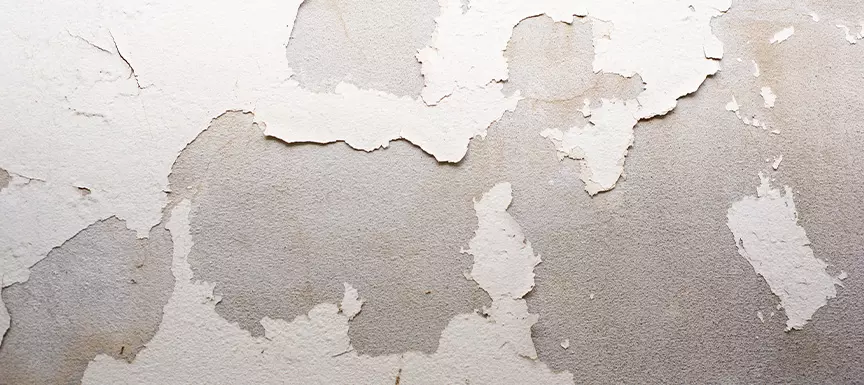
By being vigilant and recognizing these common signs of roof leaks, you can maintain the integrity of your roof and protect your home from water damage. Regular inspections and timely repairs are essential in managing and preventing roof leaks effectively.

